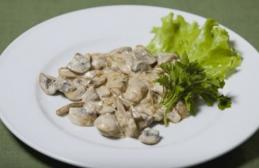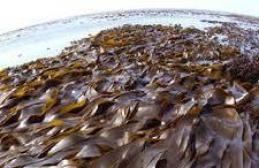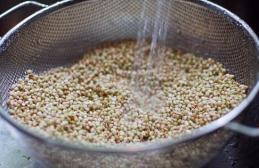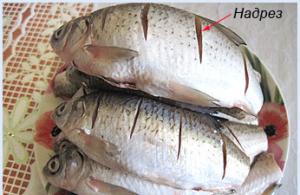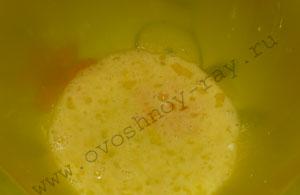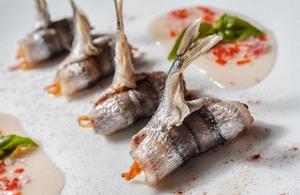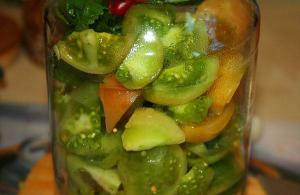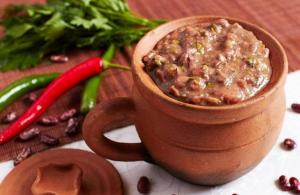Having lived half your life, you sometimes learn incredible stories about such simple and familiar things as the history of ordinary gravy. Everyone always made the usual gravy with fried flour, cream and broth. Now communicating with professional chef, I find out that this gravy is none other than Bechamel sauce. And the history of its creation goes back to the reign of French king Louis 14th. Bechamel sauce turns out to be one of the five basic sauces French cuisine and on their basis all the variety of sauces that are currently used are already prepared. I often hear it called bechamel, but I only recently heard the story of its creation. What is this mysterious bechamel sauce? It turns out that the cook decided to simply add to the thick white sauce a little cream. This cook's name was Bechamel. This is how the name of the sauce came about. When you first hear the name of this sauce, you think that it is something terribly complicated. It will be very difficult to prepare the sauce. But after reading the recipe for bechamel sauce, my opinion changes.
What is the secret of cooking? The basis of bechamel sauce is milk or cream, the second integral component is flour, fried in butter to a certain color. The third component is broth, for sauce intended for meat - meat, for fish - fish. This is how bechamel sauce is made! The mystery has been solved! You can cook, but before that you need to learn the little subtleties of preparing bechamel. Even after studying the intricacies of cooking, it may not work out right away the way it is prepared. experienced chefs. You can try, you have to start from the very beginning simple recipe preparing bechamel sauce.
How to prepare bechamel sauce without spoiling it?
The flour is fried in oil in the proportion of 100g of oil - 1 spoon of flour, until light brown; if you overfry, the taste of the sauce will deteriorate;
For the sauce you can use milk or cream, you cannot use sour cream; it will curdle when heated, this is at the discretion of the housewife, but you need to add cream in a thin stream so that no lumps form;
— when preparing the sauce, use wooden spoons or spatulas;
Sauté the onions and vegetables in a frying pan a little before adding them to the sauce;
It is better to put spices and seasonings in warm milk To get the flavor, the spices should not interrupt the taste of the sauce;
If the sauce is intended for cooking, for example, the dish “fish with bechamel sauce”, make it liquid consistency;
— the sauce is cooked over low heat, with continuous stirring, it contains flour, so it can easily burn;
Lemon juice should not be included in the sauce; it will curdle the cream or milk;
The sauce can be stored in the refrigerator for 3-4 days, but it is recommended to serve bechamel only hot. To prevent the sauce from becoming covered with a thick film in the refrigerator, pour a little melted butter onto its surface.
 The main thing is what you can do with the sauce various additives, at the discretion of the cook or housewife, add new shades of taste. You can experiment with spices, perhaps add Bay leaf, And nutmeg And onion. Dip spices in grains or powder into milk in linen bags, but it is better to use ones that are easily removed from the finished sauce. The recipe for bechamel sauce is not constant, but the main thing is to preserve its main components, which make this sauce unique and exquisite. The degree of thickness of the sauce also depends on the purpose of its use; it can be made according to the recipe, or you can add a little more broth and it will become more liquid. Bechamel sauce has wide application. It goes well with veal, pork, potatoes and vegetable dishes. It can be used when preparing julienne, it will cover the dish golden crust. It's good to use béchamel sauce for lasagna, but remember that the sauce is not a dressing and is not recommended. An ideally prepared béchamel sauce should have a soft creamy color, a uniform structure and consistency of sour cream, and should flow easily from a spoon. The sauce serves not only as a decoration for the dish. The main thing is to have pleasant taste and complement the taste of the dish with which it is served. The purpose of all sauces is to stimulate appetite and promote better absorption. Let's try to cook. We got acquainted with bechamel - here is a simple recipe:
The main thing is what you can do with the sauce various additives, at the discretion of the cook or housewife, add new shades of taste. You can experiment with spices, perhaps add Bay leaf, And nutmeg And onion. Dip spices in grains or powder into milk in linen bags, but it is better to use ones that are easily removed from the finished sauce. The recipe for bechamel sauce is not constant, but the main thing is to preserve its main components, which make this sauce unique and exquisite. The degree of thickness of the sauce also depends on the purpose of its use; it can be made according to the recipe, or you can add a little more broth and it will become more liquid. Bechamel sauce has wide application. It goes well with veal, pork, potatoes and vegetable dishes. It can be used when preparing julienne, it will cover the dish golden crust. It's good to use béchamel sauce for lasagna, but remember that the sauce is not a dressing and is not recommended. An ideally prepared béchamel sauce should have a soft creamy color, a uniform structure and consistency of sour cream, and should flow easily from a spoon. The sauce serves not only as a decoration for the dish. The main thing is to have pleasant taste and complement the taste of the dish with which it is served. The purpose of all sauces is to stimulate appetite and promote better absorption. Let's try to cook. We got acquainted with bechamel - here is a simple recipe:
Bechamel sauce. Butter 2 tbsp. Grind spoons with 2 tbsp. spoons of flour, heat in a frying pan, stirring constantly until light brown. Add a cinnamon stick and salt to the heated cream and pour a thin stream of cream into the pan, stir thoroughly, avoiding the formation of lumps. Ready sauce transfer to a gravy boat. Use for cooking according to recipe.
Salmon with bechamel sauce. You will need 600g salmon, 1 root each of carrot, parsley and celery, 1 onion, 5-6 peppercorns, salt, herbs. Take a piece of fish, scald it with boiling water, remove the skin, add water, add washed and chopped roots, spices and onions. Cook over low heat until half cooked. Remove the fish, cool, and cut into even pieces. Place in a baking dish. Pour over the sauce. Bake for 30-40 minutes. Serve with greens.
Baked pork with bechamel sauce. 1 kg required pork ham, 1 carrot, parsley and horseradish root, 2 onions, one star anise, green salt. Place the pork in a saucepan, add water, and cook until tender with spices. Cool, cut into thin slices, and place in a baking dish. Pour over cold sauce. Bake for 20-30 minutes. Serve hot with shallots cut into thin rings and herbs.
Poultry julienne. You will need 300 g of chicken fillet, 300 g of champignons, cut the champignons into slices. Chicken fillet cut across the grain into strips and lightly fry in oil, add mushrooms to it and simmer for a short time. Heat the oven. Place the chicken fillet with mushrooms in cocotte bowls, sprinkle with grated cheese and pour over the bechamel sauce. Bake for 20-30 minutes. Serve hot.
Dishes using bechamel are purchased delicate taste. This sauce is considered basic in French cuisine. It is prepared from just three ingredients: flour, butter and milk. Cook the sauce the right consistency You can do it at home if you take into account some tricks in its preparation. After all, even the classic recipe has several variations.
Basics of making béchamel sauce
- The base for the sauce is Rublon, which is often called simply “Roux” by chefs. This is a mixture of butter and flour, brought to a straw color. Then a liquid component is added to it. IN original recipe– this is cream, but you can use full-fat milk.
- Some cooks add broth along with the dairy ingredients. It is not recommended to replace them fermented milk products, otherwise they will curdle at high temperature and the sauce will have lumps.
- You cannot break the most important rule for preparing sauce, in which flour and butter are used in equal proportions. You can add different amounts of liquid, thereby changing the thickness of the bechamel.
- For a light aroma of the sauce, you need to add milk. IN this method seasonings are added to cold liquid, then heated at low temperature, and infused for about 30 minutes. To avoid straining the sauce, spices with spices, you must first wrap it in gauze and boil the milk with it.
- Bechamel should have a light creamy color and light consistency. You can check it with a spoon. If the mixture drips slowly from it, the sauce is cooked correctly.
Bechamel sauce - classic recipe
The traditional sauce recipe involves the use of only 3 ingredients and a certain cooking technology. Only if you follow the recipe, bechamel will turn out to be the required consistency with a delicate taste.
For 4 servings of sauce you will need:
- butter – 2 tbsp;
- wheat flour – 2 tbsp;
- milk with 2.5% fat content - 1 tbsp.
Recipe:
Step 1. First measure everything strictly necessary products. If you need a large portion of the sauce, then adhere to the specified proportions. Be sure to sift the flour before adding to the butter.


Step 2. Place a piece of butter in a saucepan, which is then placed over very low heat.


Step 3. Continue melting the butter until it becomes translucent.


Step 4. Start adding flour in small portions. At the same time, gradually stir the mixture. Never change equal proportions using flour and butter, regardless of how thick the sauce is.


Step 5. After adding all the flour, cook the mixture until golden brown. At this stage, it is important not to overcook the Rublon, otherwise it will burn, which will ruin the sauce.


Step 6. Heat the milk and add it to the mixture, but only 2-3 tablespoons at first.


Step 7 Mix the sauce thoroughly until a homogeneous consistency is formed.


Step 8 Then pour in 2 more tablespoons of milk and stir the mixture again. However, do not increase the heat on the stove.


Step 9 The third time you add milk, you must adjust the thickness of the sauce, so add it 1 tablespoon at a time. After each new portion of liquid, stir the sauce thoroughly and, if necessary, add more milk.


Advice. This gradual pouring of milk will prevent lumps from forming, and the bechamel will acquire a uniform consistency.
Step 10 When bubbles appear on the surface, remove the sauce from the heat and add the crushed spices.


You can also add herbs and other ingredients if you wish. Traditionally, nutmeg is added to the sauce.


Step 11 Stir the sauce again, let it cool slightly and pour into a separate container.


Bechamel can be served separately with meat or mixed with other finished products in a dish.


Secrets of making bechamel sauce
- It is necessary to use only warm liquid, which is added in small portions into oil. If this is not done, then the flour will lag behind and rise, which will lead to the formation of lumps and uneven sauce.
- To prevent the bechamel from becoming bitter to taste, the flour must be brought to a straw color in a frying pan. Stir it all the time, otherwise the mixture will burn on the bottom.
- Use only a wooden spoon or spatula for stirring. Metal objects can lift a burnt layer from the bottom of the pan, which will mix with the bulk of the sauce.
- Do not add spices to hot mixture. They will be able to open fully only with gradual heating, so it is best to use them in cold milk.
- If you add vegetables and especially onions to bechamel, then they must first be sautéed. This will give the sauce a richer taste. But this should not be done if you plan to serve the sauce with fish.
- The readiness of bechamel can be determined by the bubbles that appear on its surface. At this point, it must be immediately removed from the stove.
- To prevent the sauce from burning, cook it only over low heat or steam bath. At the same time, do not forget to stir it constantly.
- Bechamel is served only warm, otherwise a film will form on it. If you have any sauce left, then before using it again you need to heat the milk, add it to the mixture and heat it over low heat.
- The sauce can be stored in the refrigerator for no more than 2 days. To prevent a crust from forming on the surface, pour a little melted butter on top.
- Liquid bechamel should not be covered with flour. It's best to keep it on the stove a little longer and stir until it thickens.
- To make it easier to add milk in a thin stream, use a small container with a spout to heat it.


As you can see, preparing bechamel at home is very simple if you follow the recipe and cooking technology. Bon appetit!
Béchamel sauce is one of the basic, mother sauces of French cuisine, which has quite rightly won worldwide recognition and love. Bechamel is the king of white sauces and the ancestor of many other, more complex sauces.
There are several legends about the creation of this sauce, but personally, the most plausible version seems to me to be that béchamel sauce was created by the court cook of Louis XIV, François de la Varenne, as a compliment to the king’s chamberlain, Louis de Béchamel.
I also heard a similar, broader version of the creation of the sauce, with the participation of Monsieur Bechamel, when for one of the magnificent receptions of King Louis XIV they simply did not have time to prepare for the planned fish dishes required quantity popular in French cuisine, and the court cooks (under the leadership of Francois de la Varenne) used hot milk instead of broth, diluting it with a culinary thickener -. And Monsieur Bechamel, as the chief court chamberlain (a sort of supply manager, including acting as a kitchen storekeeper), took the blame for the untimely organization necessary products in sufficient quantities, which, by the way, threatened severe punishment. However, the table was served perfectly new sauce, which was to the taste of the guests, became widespread, went down in history and took its rightful place in world cuisine.
Famous French and bechamel sauce, like the two main white sauces of French cuisine, are practically twin brothers, since they are prepared on the basis with addition in the first case and hot milk in the second, while the proportions of the mixture of roux and liquid, as well as the principles of preparation, remain approximately the same.
There are numerous interpretations and variations of the preparation of bechamel sauce, for example, without using a roux mixture (then the sauce is enriched with cream and beurre manier paste) and quick versions, where the sauce is prepared according to the “all at once” principle, when the recipe skips the steps of preparing the roux mixture and introducing milk to it.
I suggest you consider the classic basic recipe for preparing bechamel sauce, having mastered it, in the future you will be able to decide on the advisability of using one or another recipe for preparing the sauce that differs from the basic one.
So, the classic thick white bechamel sauce is prepared using a mixture of roux with the addition of hot milk in a ratio of approximately 1 to 5.
To prepare 1 liter of sauce you will need:
- roux mixture – 180-200 grams;
- whole milk – 1 liter;
- large onion - 1 piece;
- cloves, bay leaf;
- salt, pepper, nutmeg - to taste.
In all classic recipes The essential ingredients of bechamel sauce are a large onion, several sprigs of cloves, bay leaf and nutmeg. Their use is really advisable because it makes the sauce taste deep, moderately spicy. You can omit the use of spices if their taste would be inappropriate in the dish that will be prepared based on the sauce or to which bechamel will be served separately.

Pour the milk into a saucepan and add the onions and spices except the nutmeg. Bring the contents of the pan to a boil and cook at a gentle bubbly boil for 7-10 minutes. Be careful not to let the milk run away. Then cover the saucepan with a lid and set aside to cool slightly.

While the milk is cooling, in a separate saucepan prepare a white butter-flour roux mixture from butter and flour taken in equal parts: for 200 grams of roux mixture you will need 100 grams of butter and 100 grams of flour. It is important to prepare a white roux so that the color of the future sauce is as noble as possible.
Cool the finished roux slightly and put a couple of tablespoons of the mixture in a separate bowl. This a small amount of The roux may be needed during the final stages of cooking if the sauce turns out too thin.
In a separate article you can read in detail about preparation

When the roux mixture is ready, pour in the strained hot mixture. spiced milk. Start quickly and thoroughly stirring the contents of the pan with a whisk and cook over medium heat for 4-5 minutes until the sauce begins to boil. Now you can reduce the heat to the lowest setting and cook the sauce at a low bubbly boil for about 20-25 minutes.
When the sauce becomes smooth and glossy, season it with salt to taste, ground white pepper and, of course, a pinch of ground nutmeg.

Cook bechamel sauce to one of three states: liquid, medium or thick. Each of these consistencies will be correct and depends on how you intend to use the sauce in the future.
Thin bechamel is ideal for a light coating on vegetables, fish, meat, poultry, as well as for adding thickness to some soups.
In this case, the sauce will have the fluidity of low-fat cream and almost immediately flow from the spatula in a thin, thin ribbon.

Bechamel medium thickness also used to coat vegetables before baking, various gratins and casseroles.
The consistency of the medium-thick sauce is determined by the way it flows from the spatula in a wide ribbon. The sauce evenly covers the spatula, holds well on it, but at the same time retains its fluidity.

Thick bechamel is used, as a rule, to bind ingredients in dish fillings and fillings, and also as a base for some soufflés.
The bechamel has a thick consistency and sits tightly and voluminously on the spatula, but does not stand up like a stick: it still retains its fluidity if you tap the inside side of the pan with a spoon.

You need to control the thickness of the sauce very carefully and carefully, because if you overcook it a little, it can instantly go from a thin consistency to a thick one.
The thickness of the sauce will be affected by the amount of butter and flour used in the roux mixture. You can vary the density in the finished sauce: too thick sauce diluted by adding hot milk little by little, and the too liquid one is further thickened with small portions of the prepared roux mixture.
When starting to prepare bechamel sauce, you should always keep a small supply on hand. ready mixture roux and hot milk.
Voila! Wonderful sauce Bechamel is ready!
Béchamel sauce is very popular in preparing all kinds of vegetable casseroles, gratins, meat dishes. In addition, this sauce is an essential ingredient in dishes such as lasagna and moussaka. During the preparation of the dish, the sauce gently envelops each piece of the future dish, envelops them with a delicate, subtle creamy taste, softens, binds and gives nobleness to the usual ingredients.
Unfortunately, many recipes that you can find on the Internet and some cookbooks, they suggest using industrial mayonnaise, sometimes in terrifying quantities. Even more unfortunately, many amateur cooks continue to use it in their kitchens. In no case should you use industrial mayonnaise in dishes that are subjected to high-temperature heat treatment: not only is it exposed to high temperatures this product decomposes into an incomprehensible substance, curdles, oozes a monstrous amount of fat of unknown origin, and thus it spoils ready dish and tastes absolutely disgusting.
Try making béchamel sauce and using it instead of commercial mayonnaise in your baked goods recipes and you'll see the genius of this simple and well-deserved classic French sauce.
Bon appetit!
so as not to miss all the delicious things!
I will also be glad to receive feedback on your cooking experience based on the materials in my article.
Secrets of making bechamel sauceFamous sauce bechamel is a masterpiece French cooking, his refined taste complements many dishes, making them even tastier and more tender. WITH secrets of making bechamel sauce and recipes for dishes using it you will find in the article
Béchamel is one of the five basic sauces of French cuisine, also called “mother” or “great”. These are veloute, espagnole, hollandaise, bechamel and tomato sauces. Basic sauce It’s not for nothing that they received such a name, because all the sauces of French cuisine are prepared on their basis, and there are no less than 3 thousand of them.
Bechamel sauce traces its “pedigree” to Louis Bechamel, majordomo of the French king Louis XIV. But this aristocrat hardly came up with famous sauce on one's own. Most likely, he hastened to give his name to the brainchild of one of the royal chefs. And for good reason: the simple combination of an oil-flour mixture with cream has become a real sensation in French cooking. What's special about it?
The base of béchamel sauce is roublon (roux) and milk (in original version- cream). Rublon, or otherwise called roux (from the French "roux", meaning "red") is a mixture of butter and flour, fried until golden brown.
From the dairy component, only milk or cream is suitable for making sauce. If you replace them, for example, with sour cream or another fermented milk product, then when heated they may curl and the sauce will be spoiled. When choosing cream to prepare the sauce, you need to keep in mind that it cannot be overheated, otherwise it will lose its homogeneous structure. And in order to return the mixture to its original state, you will have to add various liquids to the sauce. For example, broths: vegetable, fish, meat. Therefore, often, when using cream in a sauce, cooks simultaneously introduce broth into it. However, the most perfect option To prepare this sauce, use milk with a fat content of 2.5%.
Flour and butter for making roux are taken in equal quantities, and the dose of milk is determined depending on what consistency you want the sauce to be: liquid, medium thick or thick.
To give light sauce aroma milk is pre-flavored. To do this, spices are placed in cold milk, after which it is gradually heated and infused. The choice of spices is quite wide. These are roots (onion, parsley or dill root), herbs (thyme, oregano, rosemary, marjoram), spices (garlic, onion, pepper). At the same time, it is better to put herbs and small spices in a clothes bag - this will make it easier to remove them from the milk later. It’s easier with roots and pieces of vegetables - after the milk has infused, you just need to strain it.
After flavoring, milk can be used for its intended purpose. It is introduced into the butter-flour mixture gradually - if you add all the milk at once, the flour will float to the surface and lumps will form in the sauce. When the sauce reaches the required thickness, remove it from the heat. That's it - the sauce is ready!
Bechamel sauce goes well with dairy veal, pork, poultry, white fish, potatoes, celery and cauliflower. However, when combining vegetables and sauce, you need to remember that bechamel is still a sauce, not a dressing: in the process heat treatment it does not evaporate and is not absorbed into the food, but remains on top.
And finally, the main secrets of Bechamel sauce:
During sauteing, the flour should acquire a golden hue. Don't overcook it - it will add to the sauce. bad taste and ruin it appearance.
Pour the milk into the roux gradually, in a thin stream, so that no lumps form in it.
If the formation of lumps cannot be avoided, strain the sauce after cooking.
Stir the sauce only with a wooden spoon: metal utensils can pick up the burnt crust from the bottom of the dish and fried, dense particles will get into the consistency of the sauce.
Do not put spices in boiling milk: only gradual heating will most fully reveal their aromatic qualities.
It is better to lightly fry the onions and vegetables in a dry frying pan before adding them to the milk - this will give them a richer taste.
If you plan to serve bechamel with fish, you don’t have to fry the vegetables - the fish prefers a more delicate aroma.
It is better not to use lemon juice to flavor the sauce, as the acidic environment promotes curdling of the milk. Lemon juice Zest will completely replace it.
Do not overdo it with spices - they should only set off and not interrupt the main one, creamy aroma sauce.
For stewing, it is better to make a sauce with a thinner consistency.
Meat and fish are not added to the sauce raw, but are first cooked until half cooked.
As soon as characteristic bubbles appear on the surface of the sauce, it is ready.
To prevent the sauce (as well as the roux) from burning, you need to cook it over low heat.
Bechamel is served hot, as a thin film forms on the cold sauce, which spoils its appearance. To eliminate it, you need to pour the sauce back into the pan, add a little milk, heat and mix well.
The sauce can be stored in the refrigerator for 2-3 days.
Perfect bechamel has a light cream color, a uniform structure and a medium-thick consistency similar to that of liquid puree. This sauce flows from the spoon in an even stream, rather than falling out of it in one piece.
Bechamel sauce
Milk 2.5% – 100 ml
Flour - 50 g
Butter - 50 g
Spices - to taste
First soften the butter and rub the flour into it. Place the mixture in a heated frying pan and fry over low heat until golden brown. . Add spices to the milk, heat and simmer for 3-5 minutes over low heat. After that, take out the spices and pour the milk in a thin stream into the butter-flour mixture. Stirring constantly, bring the sauce to medium thickness and remove from heat.
Bechamel sauce (microwave)
Butter – 60 ml
Flour - 60 g
Milk – 750 ml
Nutmeg (grated) - to taste
Black pepper (ground) - to taste
Salt - to taste
Melt the butter in the microwave at 100% power for 1-2 minutes; add flour to it and heat at the same power for 1 minute. Add milk, stirring vigorously. Boil the sauce for 5-6 minutes, uncovered, at full power, stirring occasionally. Salt, pepper and add nutmeg. We filter.
Lasagne Bolognese style
Veal – 300 g
Onion – 150 g
Salt - to taste
Pepper - to taste
Carrots – 50 g
Vegetable oil - 75 g
Cream - 50 g
Tomatoes “Pilati” – 50 g
Paste – 100 g
Parmesan cheese - 20 g
Bechamel sauce – 50 g
Tomato juice – 200 g
Flour - 3 g
Butter - 3 tbsp.
Grind the veal in a meat grinder and fry in vegetable oil. Finely chop the onion (50 g), sauté and add to the meat. Cut the carrots into small cubes and add them to the meat. Add cream, chopped tomatoes, salt, pepper and simmer for 15 minutes. In boiling salted water with added vegetable oil lower the pasta and boil until done. Then place the pasta in a colander and let the excess water drain. Place a layer of paste in the mold and place a layer of minced meat on it. Sprinkle portions of lasagna with grated cheese and bake until it turns golden.
For the sauce, finely chop the onion (100 g) and fry it on butter(2 tbsp. spoons). Add to it tomato juice, salt and pepper. Sauté the flour in butter (1 tbsp) and add to the sauce. Bring it to a boil and simmer over low heat until it thickens. Then cool the sauce, add Bechamel and blend in a blender. Ready lasagna pour over the sauce and serve.
Pancakes "Omoniere"
Boiled tongue - 50 g
Bacon – 25 g
Ham – 30 g
Butter - 15 g
Onion - 10 g
Gherkins – 15 g
Mushroom sauce – 50 ml
Bechamel sauce – 40 ml
Flour - 3 tbsp.
Eggs - 1 piece
Milk – 200 ml
Vegetable oil – 25 ml
Green onions— 5 g
Salt - to taste
Tongue, bacon, ham, gherkins, chopped onions small cubes and lightly fry in butter, then add sauces (mushroom and bechamel) and simmer until cooked. From the prepared dough (milk, egg, flour, salt, beaten until homogeneous mass) fry pancakes and put minced meat in them. Then we form bags from pancakes. We use green onion feathers as culinary twine.
Serve pancakes with sour cream.
Subtleties of making pancakes
If you pour a few tablespoons of fat into the pancake batter and stir well, you won’t need to grease the pan every time.
Sturgeon with bechamel sauce
Sturgeon – 350 g
Butter - 25 g
White wine – 30 ml
Champignons – 50 g
Pepper - to taste
Salt - to taste
Milk – 110 ml
Oil – 10 g
Flour - 10 g
Cut fish fillet without skin and cartilage into portioned pieces, salt, sprinkle with black pepper and simmer for 10 minutes in wine and butter. Raw fresh mushrooms Wipe them, simmer them in oil and prepare puree. We prepare bechamel sauce from milk, butter and flour, add mushroom puree and the juice in which the fish was stewed. Pour a little sauce into the frying pan so that the fish is completely covered with it, and bake in a very hot oven. Serve in the same bowl.

